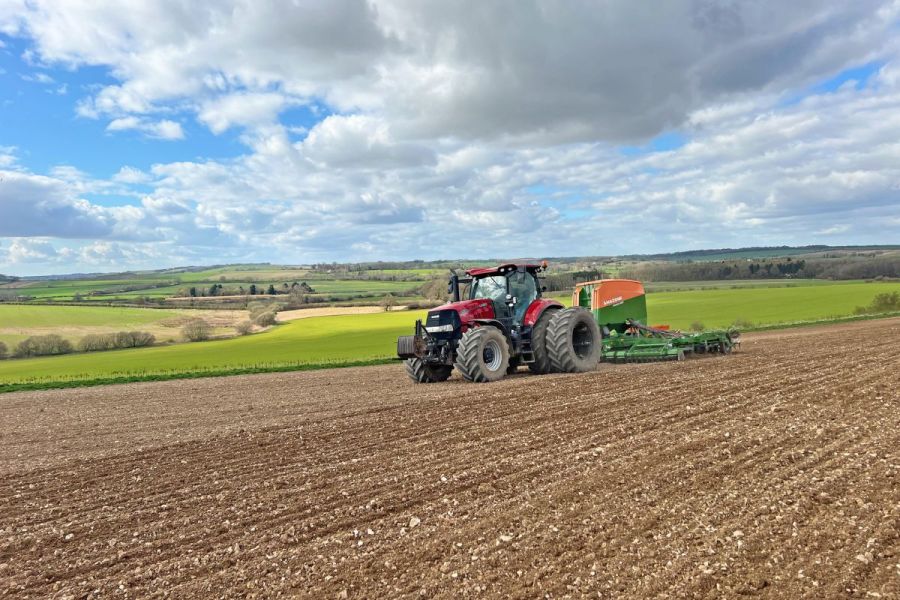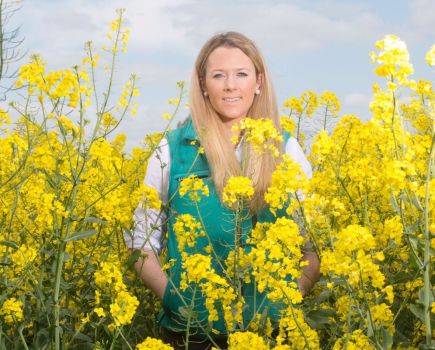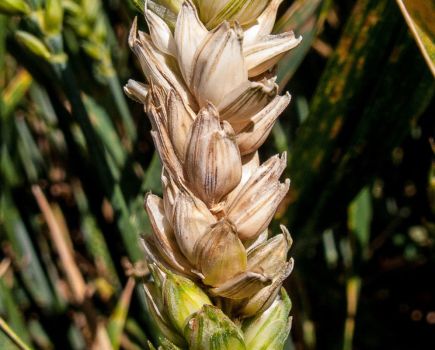As interest grows in producing pulses on British soils, CPM catches up with an organic Lincolnshire farmer to find out why they’re an integral part of his strategy.
“Becoming a ‘we’ not an ‘I’ is fundamental for knowledge sharing, progression and moving forward in general.”
By Charlotte Cunningham
During recent years there’s been an undeniable growing interest in home-grown proteins, marking a significant shift in agricultural practices as more farmers explore the viability of growing beans and peas on their own farms. This trend has largely been driven by a combination of economic, environmental, and market factors, making pulses increasingly attractive.
Aside from their rising market demand, on a farm level, pulse crops have several benefits – from nitrogen-fixing abilities which enable the potential reduction of synthetic fertilisers, to enhancing soil health.
However, mastering pulse production isn’t a quick game. It requires patience, trial, and error—something Lincolnshire grower Paul Barnes knows all too well.
Paul has been estate manager at the South Ormsby Estate in Lincolnshire since 2018. “It’s a 1240ha mixed business consisting of livestock, arable and poultry enterprises,” he explains.
After farming conventionally for two years, Paul began transitioning the estate to organic production. This journey has provided valuable insights into creating a symbiotic relationship between cropping, soils, and livestock without relying on chemical inputs, he says.
Delving into the arable side of things, the rotation is based on a seven-year temporary clover ley which also includes winter and spring wheat, winter and spring barley, winter and spring oats and pulses all or which are either grown for seed production or human consumption. “We aim to grow a winter cereal after vining peas, but focus on spring cropping because in between crops we’re trying to support our livestock rotation,” explains Paul. “The key thing is getting the pulse crop in the middle of the rotation and then take advantage of the top up of nitrogen fixation as this is key element for an organic farming system”
So why pulses? Paul says it’s all about improving soil health. “Everything starts with soils – look after the soils and they will look after you. Having the pulses as a central, pivotal-point in the seven-year rotation is really important for us,
“If we’re relying on the two-year grass ley to fix nitrogen, which of course it will, you’re going to start depleting the soils. We can’t let that happen, particularly being organic,” he stresses.
“We therefore have to start looking at having an input crop which also fixes nitrogen, and then we can go again. We’ve had some fantastic years but also diabolic – this year looking to be the latter; it’s been a testing year from everyone.”
Paul has learnt a lot about pulses from his years of growing them and trialling different techniques and methods, he also joined the ADAS Bean YEN project to further his knowledge. “From what we’ve seen with the spring beans, where we’ve tried to min-till on the organic system, I don’t think it’s given the roots enough space to breathe, shall we say.
“The plough-based system works for us – certainly for the beans – it allows the root structure to go down and gives us a slightly earlier window for drilling. On some of our very fortunate land we can plough and drill in the same day.”
After several years of integration, Paul has found that it’s spring beans and vining peas which fit his system the best. “Spring beans suit our rotation but we’ve just started working with a local contractor and local vining pea company. So, it’s nice that we have two options for adding pulse crops into the rotation.”
That said, challenges remain. “Weeds are an obvious one when we talk about beans particularly being organic, but for us, they’re not as much of an issue now as we’ve tried to understand the crop and how far we can push it.
“Personally, I find it best to go through with a scratcher harrow when crops are about an inch from emergence and this seems to help stimulate and bring them on. I then go through with two or three passes with the weed harrow before we get too much crop height.”
Paul adds that he’s trialled direct drilling with inter-row hoeing, but this had too much of a negative impact on yield to be a viable option for the farm. “It’s difficult to get the output with an inter-row hoe system too whereas with a 12m weed harrow we can get around the farm in a couple of days – a huge benefit in an organic system.”
He says his biggest challenge at the moment is disease, namely chocolate spot. “We’re considering all sorts of things currently, such as whether we should consider a bi-cropping system, for example. It’s difficult to come up with new ideas on your own, so it’s something I’ve been discussing with the PulsePEP group I’m part of.
“I don’t get the knowledge sharing when I’m trying to figure things out on my own – you almost become very stale,” he laughs.
PulsePEP is a knowledge exchange hub which has been set up as part of the NCS project – Nitrogen Efficient Plants for Climate Smart Cropping Systems – a four-year £5.9M research programme led by PGRO, involving 200 UK farms and 17 partners.
The project aims to bring about a reduction of 1.5Mt CO₂e per annum or 54% of the maximum potential for UK agriculture through increasing pulse and legume cropping in arable rotations to 20% across the UK, and replacing 50% of imported soya meal used in livestock feed rations with home-grown legumes.
Paul is part of the project too, having been recruited as one of the nine ‘Pulse Pioneers’ – a group of farmers who are being paid to carry out the trials on their own farm. The project kicked off last year, so what’s this involved to date for Paul?
“We sat down pre-drilling and came up with a field-scale plan. This year we had a 17ha field and put three trial plots in with an untreated area around the outside of the field, comparing a variety of factors including cropping, the use of biostimulants and whether or not atmospheric nitrogen can impact nodule counts, and therefore, nitrogen fixing.
“It’s been really beneficial so far – both the trials and just being part of a group of farmers all trying to achieve the same. You want to learn and understand and you can’t always do that on your own. Having a group of like-minded people in different regions enables that – it’s the one thing we must keep doing.”
Tom Allen-Stevens, founder of BOFIN and partner in the NCS project says preliminary results from the Pulse Pioneers’ year one trials look promising. Tom is a ‘Pulse Pioneer’ himself and says: “Between us we’ve been comparing biostimulants, inter-cropping, fungicides and fertilisers. We’ve also set up trials to compare the impact of pulse and cereal crops on the following crops.”
The physiological effects of different agronomy treatments have been monitored and benchmarked through YEN. “This gives us all a clear view of how our crops perform against others giving us a broader perspective,” he adds. “The sampling involved in the Bean YEN also helps to pinpoint which aspect of the crop’s growth was below par and exactly when that happened.
“Next step is for the results to be fully analysed and confirmed by the project researchers, but early observations are that year one has shown some interesting findings. For example, some of the Pioneers have seen a yield advantage with their treatments while others haven’t. With this being year one of the project and a difficult year for beans, we’re just at the beginning of this journey.
“Following our recent recruitment campaign we’ve doubled the number of trialists for the 2024/5 and look forward to developing our findings further with them on board.”
Looking at the longer-term vision, Paul says it’s all about trying to achieve added value from the crops he growers. “For us, with beans being one of the key parts in the rotation, I hope to learn how we can profit more from them. By that, I don’t just mean as a standalone crop, but how the following crops can benefit from them in the rotation.
“We must share ideas for that to happen. Becoming a ‘we’ not an ‘I’ is fundamental for knowledge sharing, progression and moving forward in general. It’s all the little things we’re picking up along the way which is going to – as an island – help us become more self-sufficient with these proteins.”
This article was taken from the latest issue of CPM. Read the article in full here.
For more articles like this, subscribe here.
Sign up for Crop Production Magazine’s FREE e-newsletter here.




